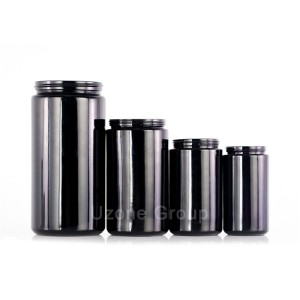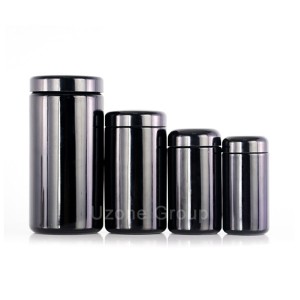The glass bottle production process mainly includes: ①Pre-processing of raw materials. Crush the bulk raw materials (quartz sand, soda ash, limestone, feldspar, etc.), dry the wet raw materials, and remove iron from the iron-containing raw materials to ensure the quality of the glass. ② Preparation of batch. ③Melting. The glass batch material is heated at high temperature (1550~1600 degrees) in a kiln furnace or a pool furnace to form a uniform, bubble-free liquid glass that meets the molding requirements. ④Forming. Put the liquid glass into the mold to make glass products of the required shape, such as flat plates and various utensils. ⑤ Heat treatment. Through annealing, quenching and other processes, the internal stress, phase separation or crystallization of the glass is eliminated or produced, and the structural state of the glass is changed.
The advantages of glass packaging containers in the field of beverage packaging
Glass packaging materials and containers have many advantages:
1. Glass materials have good barrier properties, which can prevent oxygen and other gases from attacking the contents, and at the same time prevent the volatile components of the contents from volatilizing into the atmosphere;
2. The glass bottle can be used repeatedly, which can reduce the packaging cost;
3. The color and transparency of glass can be changed easily;
4. The glass bottle is safe and hygienic, has good corrosion resistance and acid corrosion resistance, and is suitable for packaging acidic substances (such as vegetable juice drinks, etc.);
5. In addition, because glass bottles are suitable for the production of automatic filling production lines, the development of domestic glass bottle automatic filling technology and equipment is relatively mature, and the use of glass bottles to package fruit and vegetable juice beverages has certain production advantages in China.
First of all, the mold must be designed and manufactured. The glass raw material is quartz sand as the main raw material, and other auxiliary materials are melted into a liquid at high temperature, and then injected into the mold, cooled, cut, and tempered to form a glass bottle. Glass bottles generally have rigid signs, which are also made of mold shapes. According to the manufacturing method, the molding of glass bottles can be divided into three types: manual blowing, mechanical blowing and extrusion molding. Glass bottles can be divided into the following types according to their composition: one is soda glass, the other is lead glass, and the third is borosilicate glass.
The main raw materials of glass bottles are natural ore, quartz stone, caustic soda, limestone and so on. The glass bottle has a high degree of transparency and corrosion resistance, and the material properties will not change in contact with most chemicals. The manufacturing process is simple, the shape is flexible and changeable, the hardness is large, heat-resistant, clean, easy to clean, and can be used repeatedly. As packaging materials, glass bottles are mainly used for food, oil, wine, beverages, condiments, cosmetics and liquid chemical products, etc., with a wide range of uses. However, glass bottles also have its disadvantages, such as large weight, high transportation and storage costs, and not impact resistance.
Use characteristics and types of glass bottles: Glass bottles are the main packaging containers in the food, medicine, and chemical industries. They have good chemical stability; easy to seal, good air tightness, and transparency, and the condition of the contents can be observed from the outside; good storage performance; smooth surface, easy to disinfect and sterilize; beautiful appearance, colorful decoration; certain machinery strength, can withstand the pressure in the bottle and the external force during transportation; the advantages of wide distribution of raw materials and low price. Its disadvantages are heavy (large ratio of weight to capacity), high brittleness and fragility. However, these shortcomings have been significantly improved by adopting the new technology of thin-wall, light-weight and physical and chemical tempering. Therefore, the output of glass bottles can increase year by year under the fierce competition with plastics, iron cans, and iron cans.
There are many varieties of glass bottles, from small bottles with a capacity of 1ML to large bottles of more than ten liters, from round, square, to special-shaped and handle bottles, from colorless to transparent amber, green, blue, black shading bottles and opaque, the number of opalescent glass bottles is endless. In terms of manufacturing process, glass bottles are generally divided into two categories: molded bottles (using model bottles) and control bottles (using glass control bottles). Molded bottles are divided into two types: large mouth bottles (bottle mouth diameter above 30mm) and small mouth bottles. The former is used to hold powder, block and paste-like objects, and the latter is used to hold liquids. According to the bottle mouth form, it is divided into cork bottle mouth, screw bottle mouth, crown cap bottle mouth, rolling bottle mouth frosted bottle mouth, etc. According to the usage, it can be divided into single-use bottles that are discarded after use once and recycled bottles that are used in multiple cycles. According to the classification of the contents, it can be divided into wine bottles, beverage bottles, oil bottles, canned bottles, acid bottles, medicine bottles, reagent bottles, infusion bottles, cosmetic bottles and so on.
Post time: Mar-05-2021

